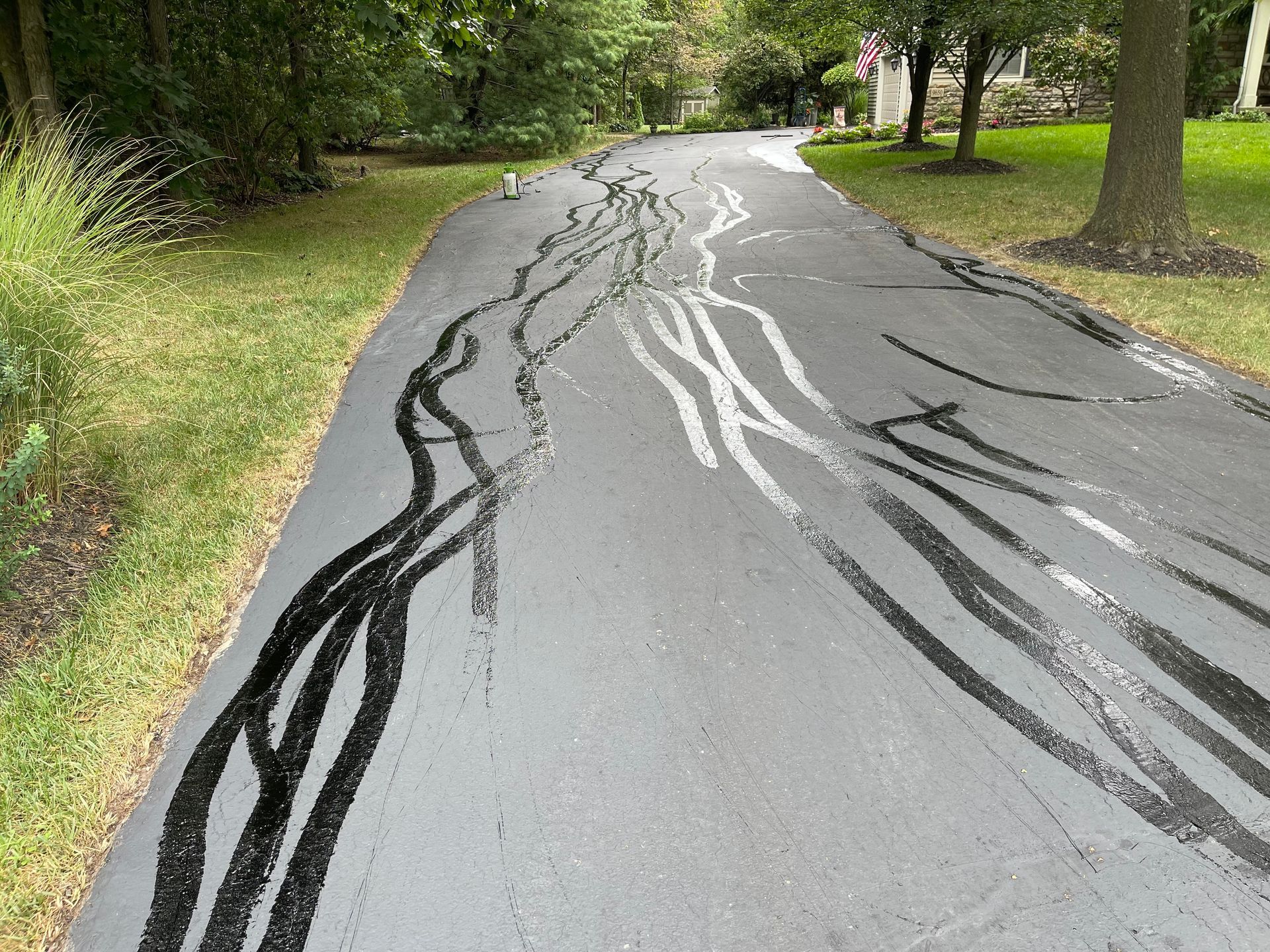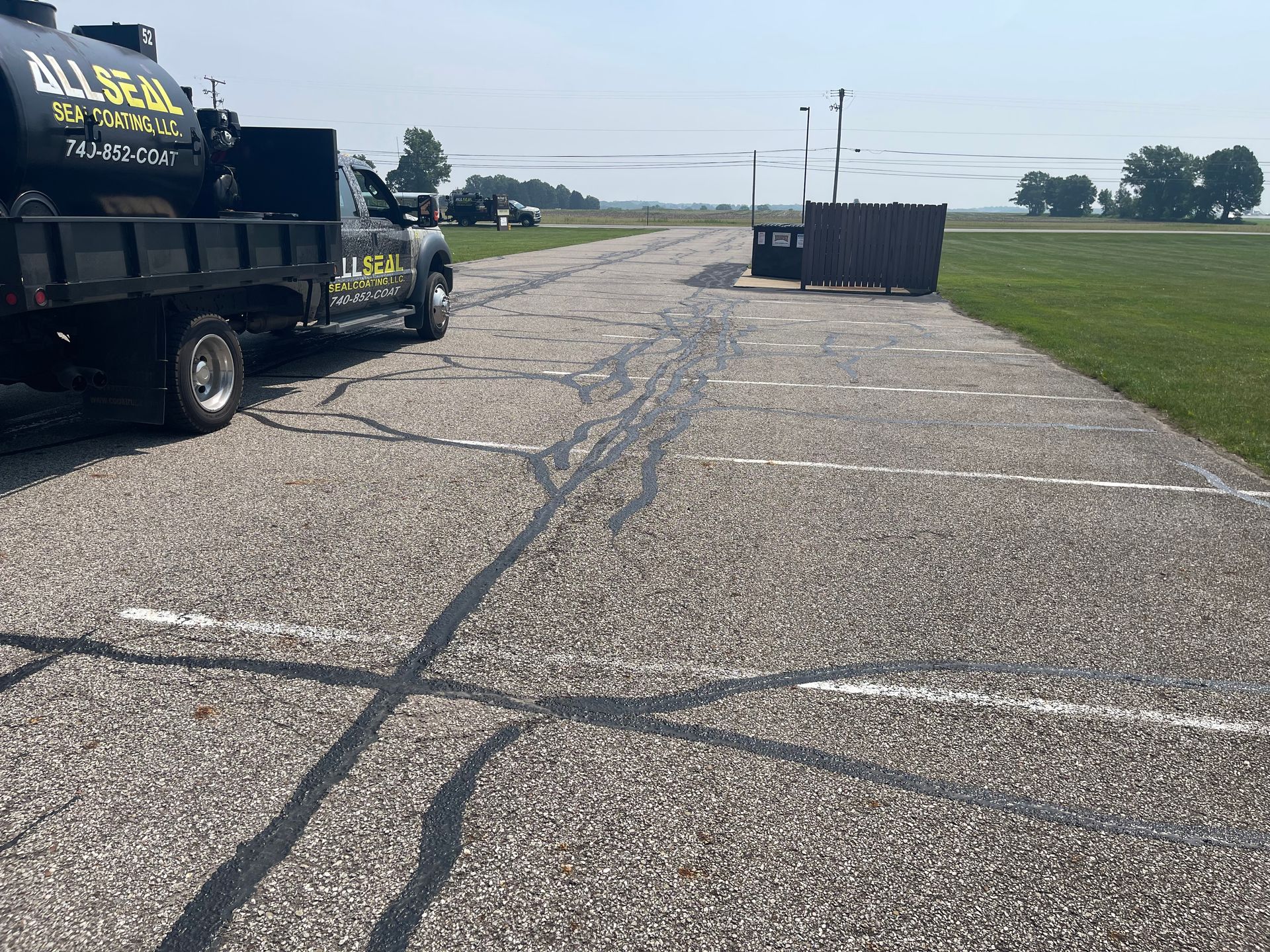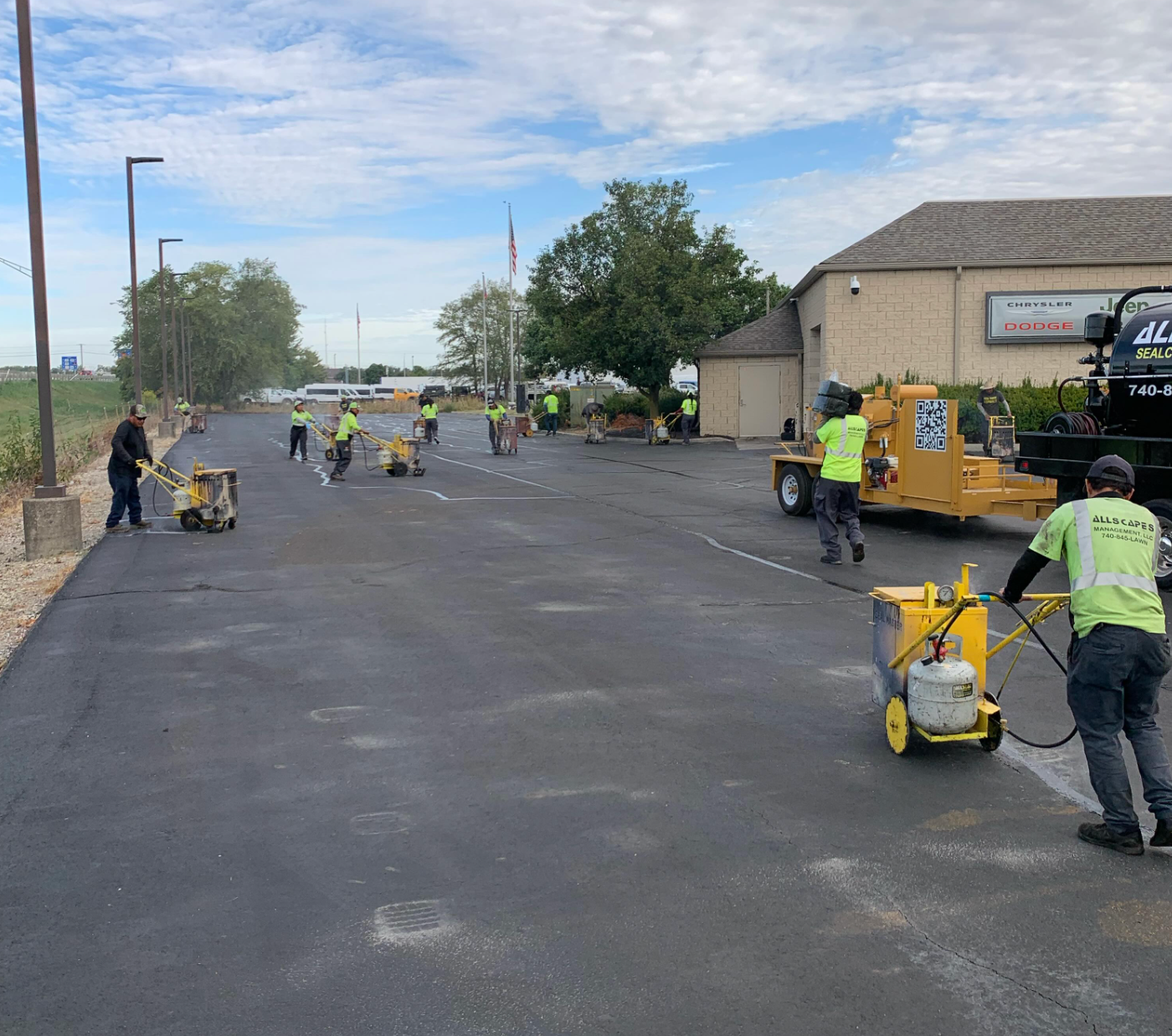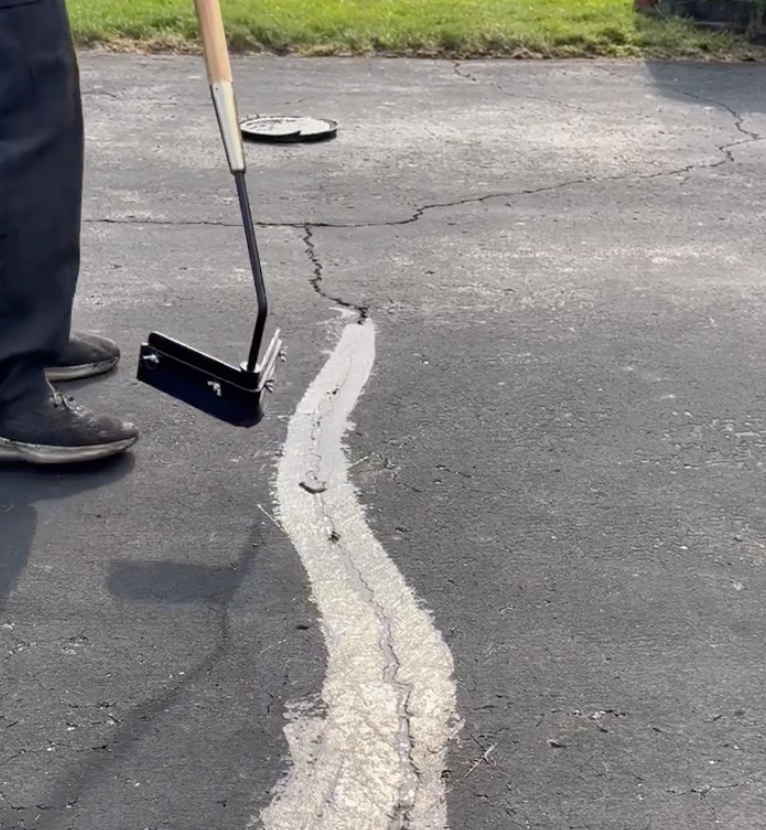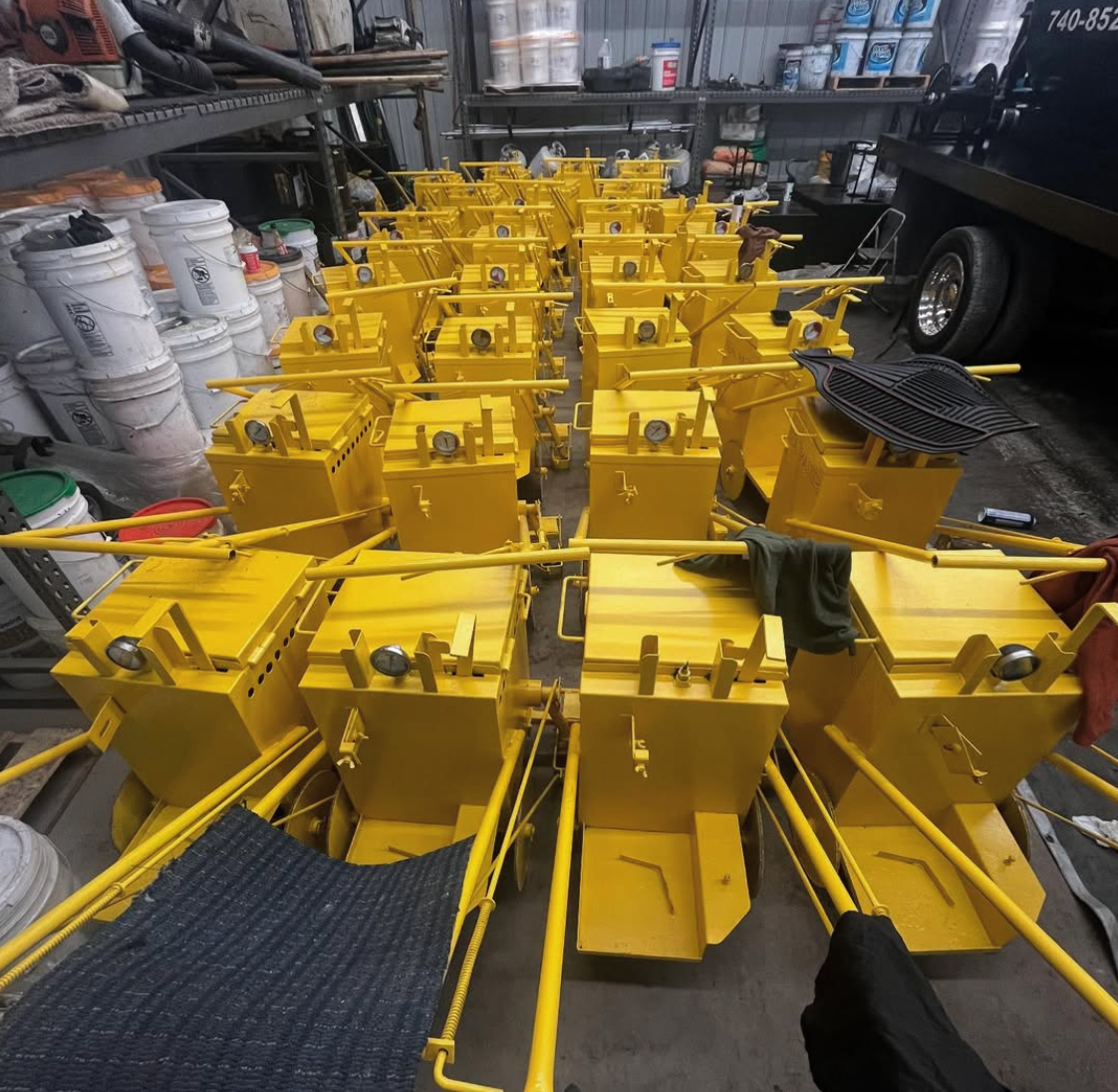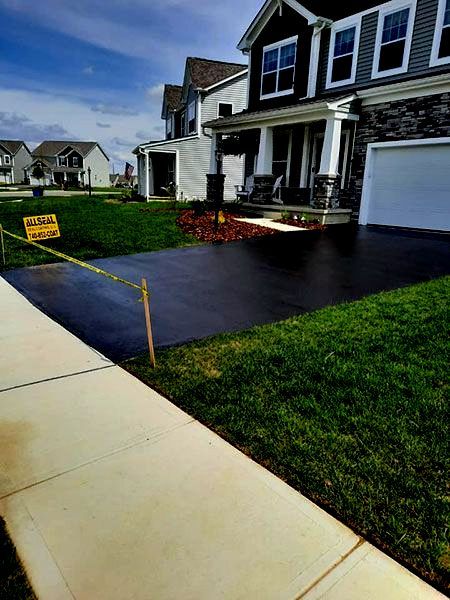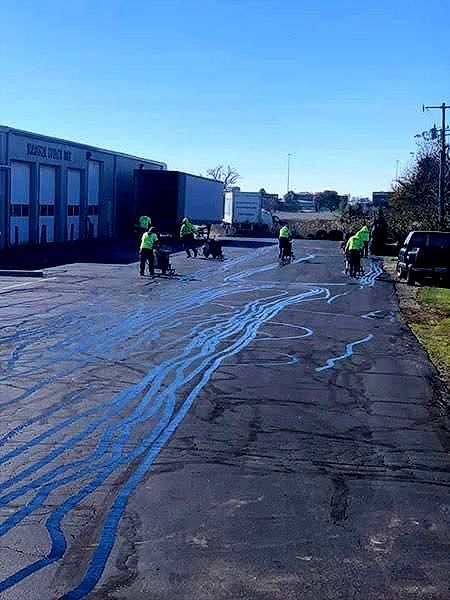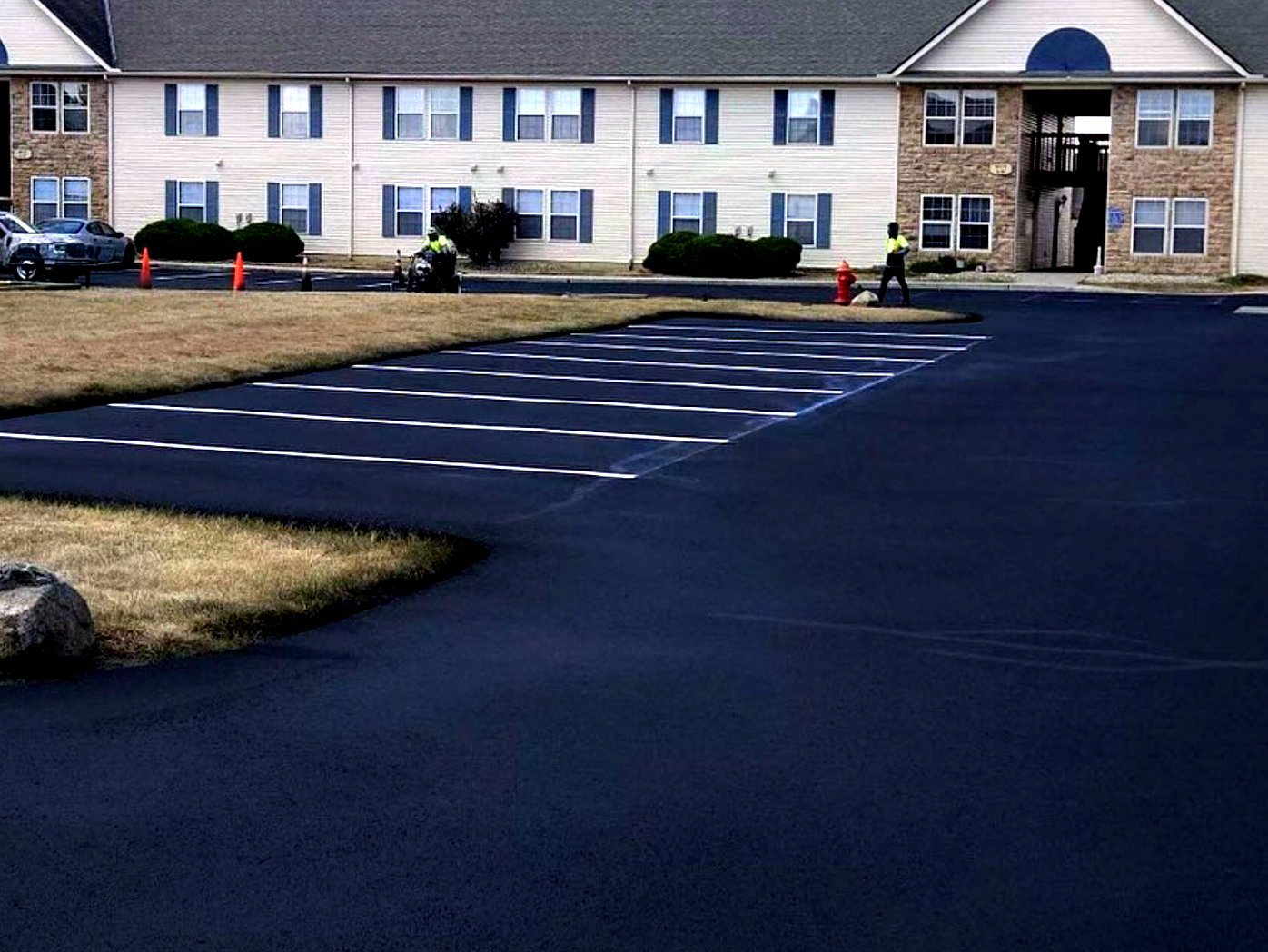Your Ohio Pavement Crack Filling Experts
With the freezing temperatures throughout Ohio in the winter, and the hot sun in the summer, asphalt often needs extra TLC to stand the test of time. Taking the time to do routine maintenance such as crack filling and other repairs can do wonders for helping your pavement last as long as possible, saving you time, money, and headaches in the long run! We offer hot and cold crack repairs for both residential and commercial properties in Columbus and throughout all of Ohio!
Our Crack Filling & Repair Services
Our hot and cold crack filling services help your pavement stand the test of time (and Ohio weather!) Routine maintenance can help prevent small cracks from turning into a big problem.
Residential & Commercial
Whether you are a homeowner or a city looking for routine maintenance for your roadways, we are able to support any and all of your asphalt repair and crack filling needs. Crack filling can extend the life of your driveway and prevent small cracks from allowing water to affect the integrity of your asphalt. Our team is equipped for any job, big or small, and we work with townships, private business owners and lot owners, as well as homeowners who need help making their pavement last.
Hot Crack Filling
Hot crack filling is a cost effective way to preserve your pavement and make it last as long as possible. By filling large and small cracks, we can help prevent water & debris from getting under the surface of your pavement. Hot crack filling dries into a rubbery substance that can expand and contract with our warm and cold temperatures in Ohio. If you're not ready for a full repaving or sealcoating, hot crack filling is a great option for touching up your pavement to keep it lasting!
Cold Crack Filling
Depending on your pavement and situation, cold crack filling may be recommended as the best option. Cold crack filling is a sealant that hardens to a firmer solid than hot crack filling, making it applicable in specific situations. Not sure if hot crack or cold crack filling is the best for your asphalt? Give us a call! We're always happy to provide a free estimate and recommend what is best for your pavement.
Asphalt Repair
Not sure if you need simple crack filling or if it's time for a full repair or re-paving? We are here to help! We provide free estimates and recommendations on the best way to preserve your pavement and keeping it lasting as long as possible. We offer crack filling in addition to our other pavement services, and often use several techniques to make sure that your pavement lasts as long as possible for you. If it's a full repair that you need, we will let you know.
Why Work with Allseal Sealcoating?
We offer a variety of sealcoating, asphalt, driveway, and road striping services to meet the needs of commercial property owners, homeowners, cities, and towns. Whether you're looking to have your driveway sealed, or are looking to have a hospital parking lot striped, we've got the equipment and the crew to meet your needs! We serve all of Central Ohio and throughout the state.
Satisfaction Guaranteed
We make sure that every job gets done properly, and your satisfaction is at the top of our priority list.
20+ Years of Experience
We have learned a LOT over the years and are able to bring all of the skills and techniques we have to your next project.
Highly Trained Staff
Our staff are the best of the best and we work as a team to get your project completed as quickly and as beautifully as possible. We pay attention to the details and can coordinate large jobs because of our amazing team!
Google Verified
We love our clients and the work that we do. Make sure that you check out some of our Google Reviews to see what other customers had to say about our work!
Ohio Local
We are based right outside of Columbus, Ohio and are proud to be a locally owned and operated business. You aren't hiring a big box contractor - We are members of the community and are proud to serve you!
Serving Columbus & All of Ohio
Wondering if we service your area? We are local to London, Ohio and serve all of Ohio! We frequently service the below list of cities and towns nearby, but if you don't see your town don't worry! Feel free to check out our Full Service Area, or give us a call and we're happy to let you know if we can travel to you!
- West Jefferson, Ohio
- London, Ohio
- Mount Sterling, Ohio
- Plain City, Ohio
- Marysville, Ohio
- Milford Center, Ohio
- Granville, Ohio
- Galena, Ohio
- Lewis Center, Ohio
- Sunbury, Ohio
- Delaware, Ohio
- Mechanicsburg, Ohio
- Jeffersonville, Ohio
- Commercial Point, Ohio
- Columbus, Ohio
- Hilliard, Ohio
- Dublin, Ohio
- Upper Arlington, Ohio
- Grove City, Ohio
- Galloway, Ohio
- Grandview Heights, Ohio
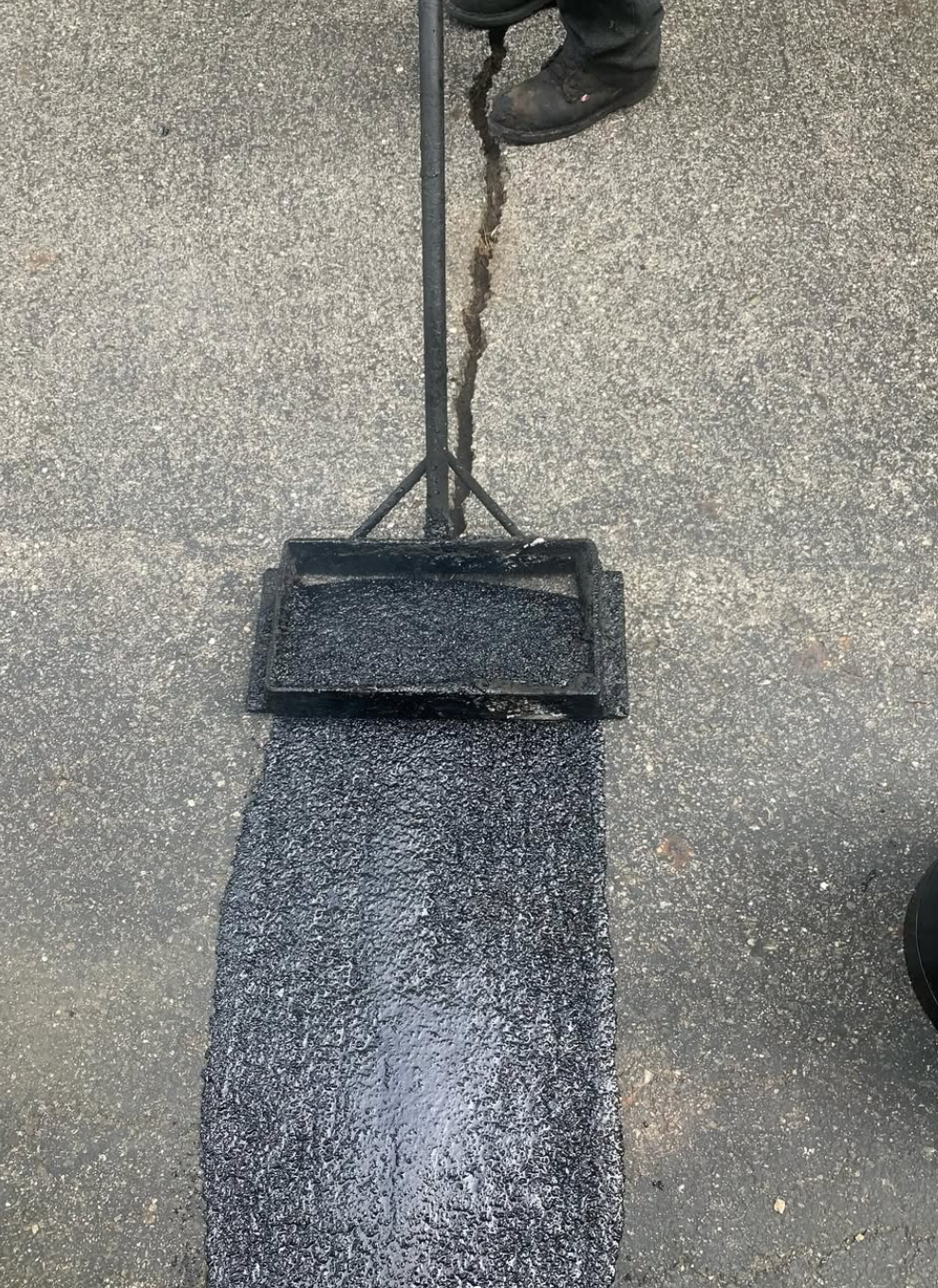
What are the Benefits of Crack Filling?
Affordability
Crack filling is the best, most affordable way to extend the life of your pavement. If you're not ready to financially commit to a full paving project, crack filling is the way to go!
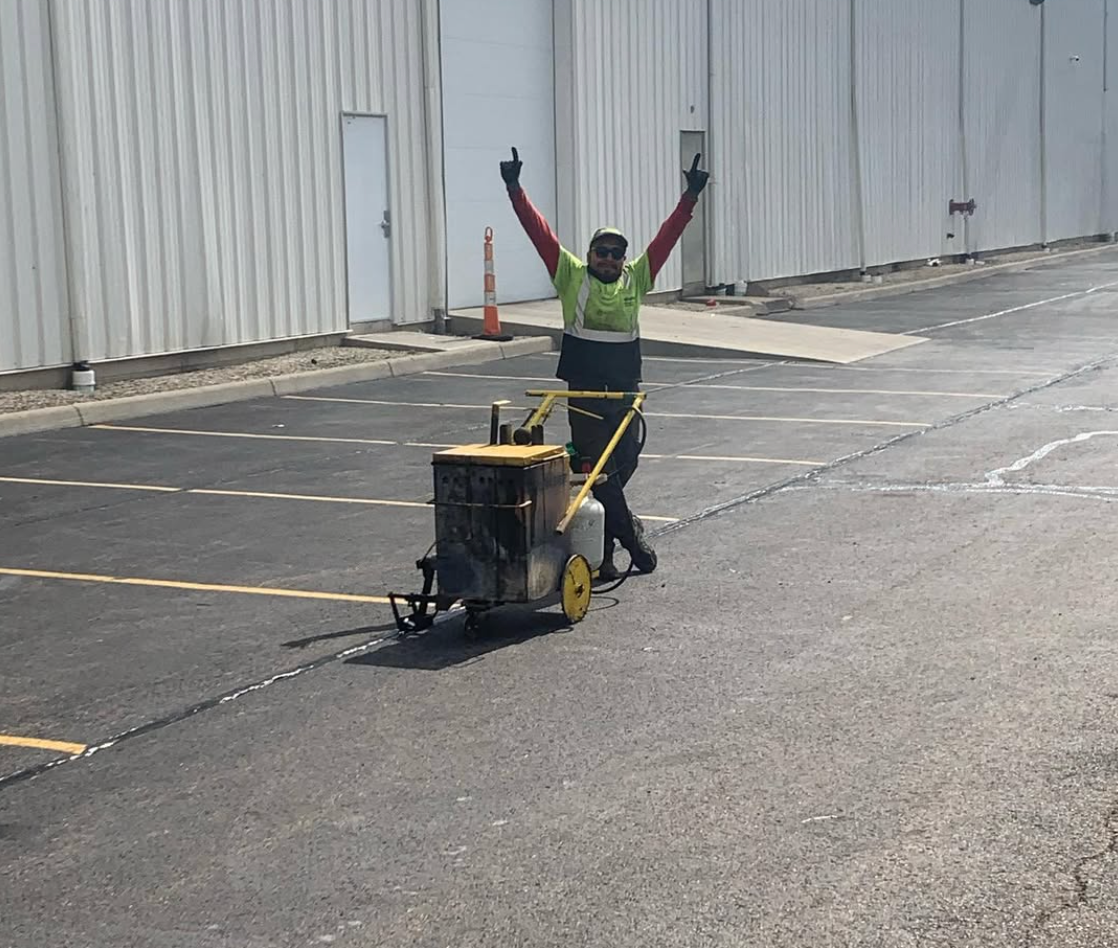
Weather Protection
Water can seep into cracks in your pavement causing further degradation, and will reduce the lifespan of your pavement. Sealing those cracks is an important part of maintenance.

Extend Pavement Life
Over time, the oils in your pavement break down with exposure to the weather. In order to keep your pavement functioning as long as possible, crack sealing is a necessary maintenance.

Flexibility
Hot crack filling expands and contracts with our Ohio season changes, making it an ideal form of protection against rain & snow.
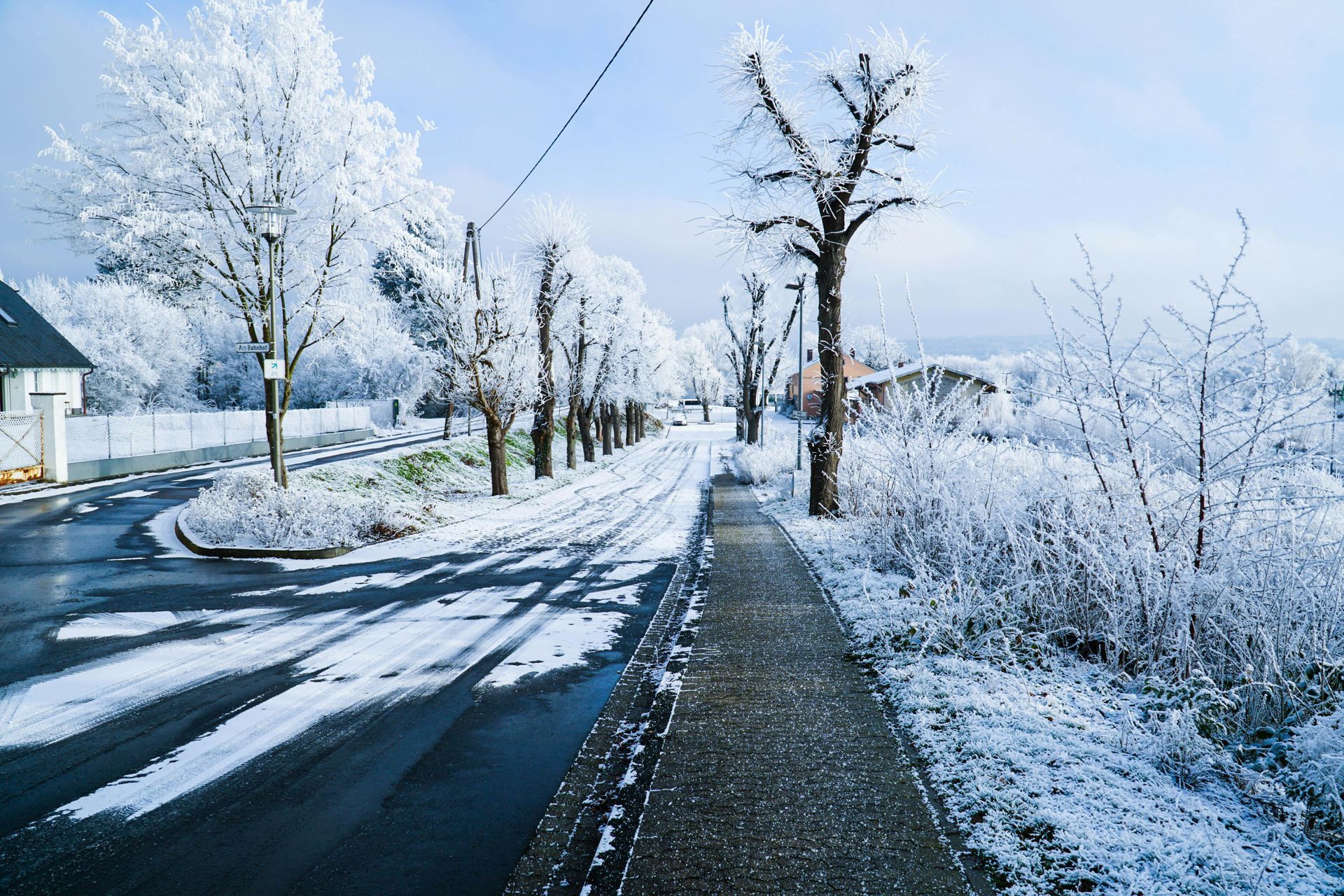
Got Crack Filling Questions? We've Got Answers.
Why is crack filling important for asphalt maintenance?
Cracks in asphalt may seem small, but they allow water to seep into the pavement, weakening the foundation and leading to potholes or larger cracks. Filling these cracks early helps extend the lifespan of your driveway, parking lot, or roadway while preventing expensive repairs later.
What is the difference between hot crack filling and cold crack filling?
Hot crack filling uses a heated rubberized asphalt sealant that penetrates deep into cracks, bonding with the existing pavement. This method is best for long-term durability and high-traffic areas.
Cold crack filling is a quicker, more cost-effective repair using a ready-to-apply material that works well for smaller cracks or temporary fixes.
We offer both solutions and can help determine the best option based on your pavement’s condition and budget.
When is the best time of year to fill cracks in asphalt?
Crack filling is best performed when temperatures are above 50°F, typically during spring, summer, and early fall in Columbus and Central Ohio. Warmer weather allows the material to bond properly, ensuring a long-lasting repair.
How long does crack filling take to dry, and when can I drive on it?
Cold crack filler typically dries within 30 minutes to an hour, while hot-applied crack filler may need a few hours to fully cure. However, we generally recommend keeping vehicles off freshly repaired areas for 24 hours for the best results.
Will crack filling make my driveway or parking lot look brand new?
Crack filling is designed to prevent further damage, but it doesn’t completely restore the original smooth appearance of your pavement. However, for a like-new finish, we recommend pairing crack filling with sealcoating, which enhances curb appeal and provides additional protection.
How often should I have cracks filled in my asphalt?
We recommend checking your pavement for cracks at least once a year, especially before winter. Columbus' freeze-thaw cycles can cause small cracks to expand quickly, so staying ahead of repairs helps maintain a safe, long-lasting surface.
Do you work with both residential and commercial properties?
Yes! We provide crack filling services for residential driveways, commercial parking lots, roads, highways, and municipal properties. Whether you’re a homeowner or managing a large property in Columbus, Dublin, or Grove City, we can help protect your asphalt investment.
Is crack filling a temporary fix or a permanent solution?
Crack filling is a preventative repair that significantly slows down pavement deterioration. While it’s not a permanent fix, it prevents small cracks from turning into major structural damage. For long-term results, pairing crack filling with routine sealcoating and ongoing maintenance is recommended.
How much does asphalt crack filling cost?
The cost depends on factors like the size and number of cracks, type of filler used, and overall pavement condition. The good news? Crack filling is one of the most affordable pavement maintenance services, and we offer free estimates to help you plan your budget.
How do I get a free estimate for crack filling in Columbus or nearby areas?
We make it easy! Simply give us a call or fill out our online form, and we’ll schedule a time to assess your pavement. Whether you’re in Columbus, Westerville, Newark, or a nearby town, we’re here to provide expert repairs that keep your asphalt in top shape.
What is your service area for crack repair?
We offer asphalt repair for homes, businesses, municipalities and more throughout Greater Columbus, Central Ohio, and all of Ohio State. You can see more details on our Service Area page.
We do our best to answer some of the most common questions we hear about asphalt crack filling, but if you have another question never hesitate to give us a call. We're always happy to chat with you about your project, get you a free quote, and answer any questions that you have!

